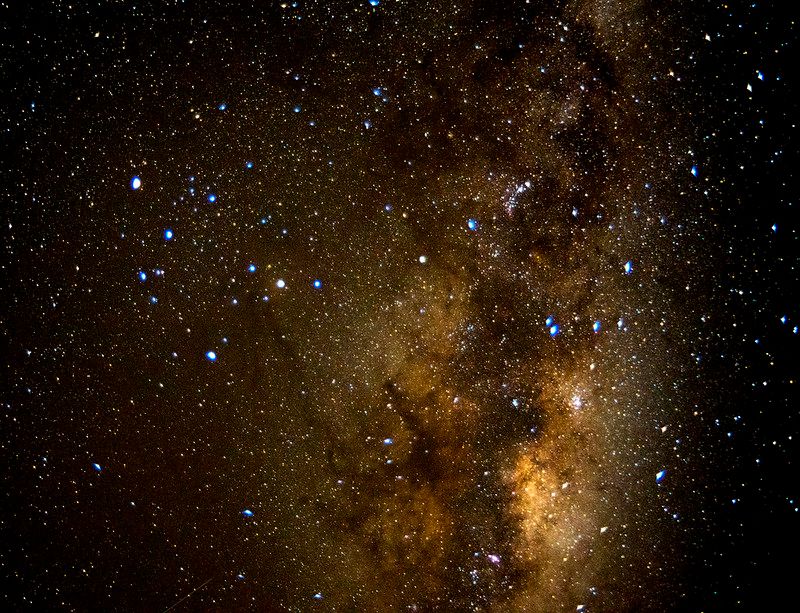Home/Curriculum resources/Indigenous Astronomy and the Solar System/Activity 3 - Observing the planets (Homework task)
Learning Area:
Science
Year levels:
Level 5, Level 6
Required resources:
Star wheel for the southern hemisphere

Activity 3 - Observing the planets (Homework task)
This activity is a part of the Indigenous Astronomy and the Solar System resource.
Scorpius featuring Mars and Saturn. Photographer: Peter Lieverdink. Source: Flicker. License: CC BY-SA 2.0.
In this homework activity, students will hone their observational skills by identifying planets in the evening sky without relying on apps or aids. They'll record their observations, noting the time and location, and attempt to identify planets based on specific criteria. This hands-on exercise also encourages them to discover Aboriginal and Torres Strait Islander names for the planets and appreciate the challenges and rewards of naked-eye sky observation.
Step by step guide
Step 1: Background information
Planets can be distinguished from stars if they:
Lie along the path of the zodiac (and hence, are visible in Zodiac constellations);
They change position with respect to background stars;
Do not generally twinkle (students can conduct online research to learn why planets do not twinkle (which will be described in other modules).
Teacher Note: Point 3 is not always true, as some planets can twinkle under the right conditions. For example, Venus can twinkle if it is very low on the horizon, and the light coming through a thick layer of the atmosphere is distorted enough. In Kamilaroi traditions, Venus when it is twinkling low on the horizon is viewed as an old man who is laughing at a rude joke he told.
Step 2: Explanation of homework task
Give the students a print-out of a star wheel for the southern hemisphere.
Have students observe the stars every night or every few nights at a given time from a given location (such as their house or apartment).
Students should record the time and place they conduct their observations.
Ask the students to try to identify a planet in the sky without using an app.
Record what planets they see and how they know they are planets.
Have them note an Aboriginal and Torres Strait Islander name for that planet.
Ask them to draw a simple diagram showing one of the planets and a couple of nearby stars. Students should do this every few days over a month or two.
Ask the students to draw a final diagram, showing the different positions of that planet over that time. They can compare this with results in Stellarium.
Ask the students to try this without writing anything down - just using their eyes and memory. Do they think they could do it?
This will show students that this is no easy feat (imagine doing it all by memory!) but it is doable and can be very enjoyable.
Related activities within this resources:

Inquiry-based learning questions
These inquiry-based questions are provided for flexible classroom use, allowing teachers to tailor discussion and reflections specific to their classroom needs.

What is Stellarium?
Discover Stellarium, a digital planetarium that offers a vivid depiction of the night sky worldwide, showcasing the celestial dance of the Sun, Moon, planets, and stars in real-time.

Activity 1 - Planet nomenclature
In this activity, students will research and share Aboriginal or Torres Strait Islander names for visible planets, explore their ordering by distance and size, and analyse how these names reflect knowledge about the planets, offering insights into cultural perspectives on celestial bodies.
Suggested timing:
30 minutes
Required resources:
Laptop/tablet, Internet access

Activity 2 - Observing retrograde motion using Stellarium
In this activity, students will use the Stellarium digital planetarium to visually explore retrograde motion of planets, observing their positions relative to stars and constellations, and take notes on their movements.
Suggested timing:
30 minutes
Required resources:
Stellarium app, Laptop/tablet